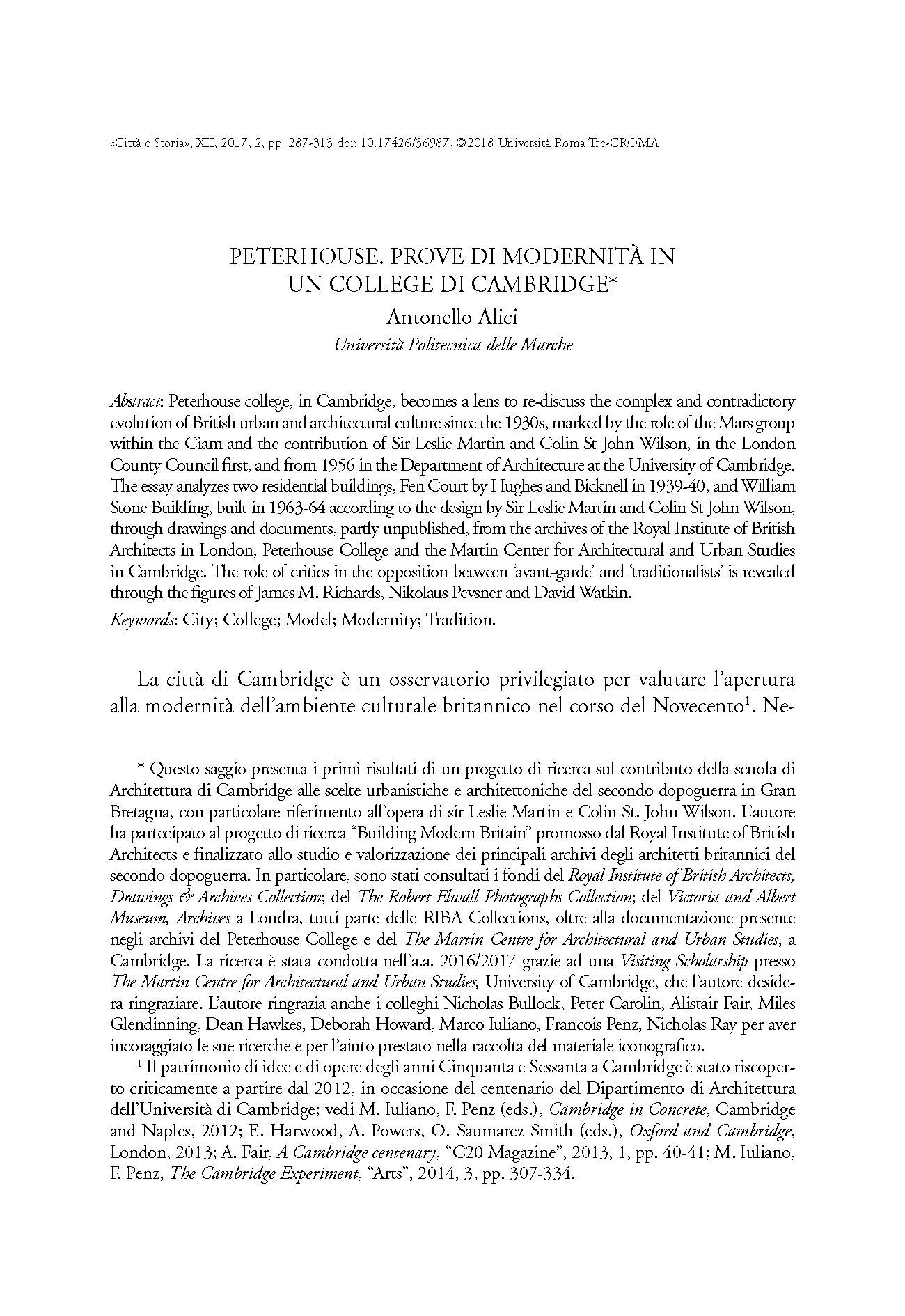Peterhouse. Prove di modernità in un college di Cambridge
6,00 €
Peterhouse college, in Cambridge, becomes a lens to re-discuss the complex and contradictory
evolution of British urban and architectural culture since the 1930s, marked by the role of the Mars group
within the Ciam and the contribution of Sir Leslie Martin and Colin St John Wilson, in the London
County Council first, and from 1956 in the Department of Architecture at the University of Cambridge.
The essay analyzes two residential buildings, Fen Court by Hughes and Bicknell in 1939-40, and William
Stone Building, built in 1963-64 according to the design by Sir Leslie Martin and Colin St John Wilson,
through drawings and documents, partly unpublished, from the archives of the Royal Institute of British
Architects in London, Peterhouse College and the Martin Center for Architectural and Urban Studies
in Cambridge. The role of critics in the opposition between ‘avant-garde’ and ‘traditionalists’ is revealed
through the figures of James M. Richards, Nikolaus Pevsner and David Watkin.
Peterhouse college, in Cambridge, becomes a lens to re-discuss the complex and contradictory
evolution of British urban and architectural culture since the 1930s, marked by the role of the Mars group
within the Ciam and the contribution of Sir Leslie Martin and Colin St John Wilson, in the London
County Council first, and from 1956 in the Department of Architecture at the University of Cambridge.
The essay analyzes two residential buildings, Fen Court by Hughes and Bicknell in 1939-40, and William
Stone Building, built in 1963-64 according to the design by Sir Leslie Martin and Colin St John Wilson,
through drawings and documents, partly unpublished, from the archives of the Royal Institute of British
Architects in London, Peterhouse College and the Martin Center for Architectural and Urban Studies
in Cambridge. The role of critics in the opposition between ‘avant-garde’ and ‘traditionalists’ is revealed
through the figures of James M. Richards, Nikolaus Pevsner and David Watkin.

